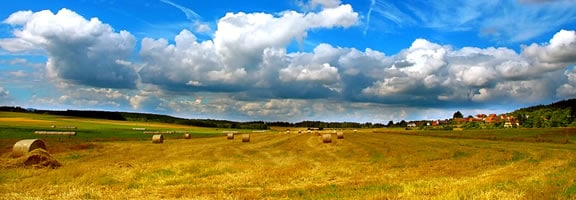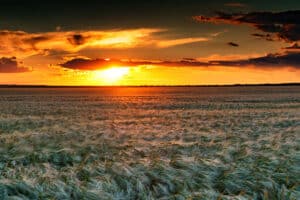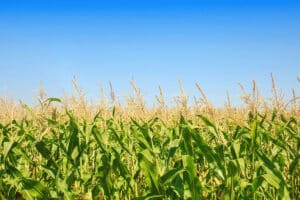Will the Great Land Bubble ever come? Does it apply to all land? Or just the skyrocketing values on farmland? The headlines ask so many questions yet where are the answers?
I was looking though some old articles from newspapers, reports, newsletters and various sources that report on land values particularly farmland values and what immediately struck out like lightning from the pages was the continued talk about a bubble or crash in land values for YEARS not just in the last year. This is not a recent phenomenon because some of these articles were from 2005 and 2007 and even as early as 2003.
So is there a land bubble? Good question! Everyone talks about it including the FDIC but nobody will definitely say if we are in a bubble. The news cycle has published a flurry of land bubble headlines every week for the last six months. A quick review of past articles for the last five years shows a similar cycle as well. Most of the land bubble talk started showing up as the residential markets headed into the spiral downward. Recreational land and residential building lots as a rule followed the residential markets for negative value losses. Rural residential building parcels also seemed to have tanked parallel with the housing and commercial markets. However, farmland appears to have done exactly the opposite of what most projected.
In 2007 over half of rural bankers thought a land price bubble was eminent. In 2008 an article reported that at the conclusion of a Midwest farmland auction two bidders asked each other what did we just do? Implying that they both thought the price went too high. However, in the same area two years later with land prices up another 20% the winning bidder is probably patting himself on the back now for buying at that 2008 price. While there are always exceptions on the local markets the national averages have continued to show increases in farmland from 5 – 20% in value.
An analysis of Kansas land values since 1991 showed only one year when values actually decreased. Most years increased 3-7% in value with recent years showing as much as a 11-15% increase in value from year to year. If you take the history back even further it shows that between 1960 and 1978 that farmland prices in Kansas doubled twice. Decreases in value show up in the 1980s which is expected but no apparent large scale crashes have appeared in farmland values for nearly fifty years. Kansas and other Central Plains states tend to be good benchmarks for national trends because of historically stable markets. Literally sitting right in the middle of the country these areas don’t fluctuate like a roller coaster in economy or values like some of the coastal states. It takes a while to catch up with trends in the heartland and if it drops sharply then the effects are not nearly as drastic.
Jason Henderson, a Kansas City Federal district economist recently spoke at the North American Agricultural Journalists association meeting and spoke of land’s value-to-rent ratio. He indicates that rents are not keeping pace with land values and that is something that happened in the 1980s farmland value crash. Henderson also pointed out that if cheap credit ends then land values will return to normal levels.
Thomas Hoening has been reporting on the financial aspects of increasing land values for years. He has been the lone wolf when it comes to interest rates and he has opposed stimulus spending such as quantitative easing. He supports raising the interest rate as the economy improves so as to curtail inflation and bubbles. The Fed seemed enthusiastic to announce his mandatory retirement as Federal District presidents have to retire at age 65 so it will be interesting to see who will sound the alarms when Hoening is not around anymore.
Credit may not seem to be a problem right now but the potential is down the road. However as long as farm operators continue to have historically low debt loads it seems unlikely that interest rate increases would cause grand scale volatility in farmland values. Farm income rose almost 30% in 2010 after good harvests along with high commodity markets. One scenario that is quoted over and over again is that if land values fall drastically that much of that loss will show up on paper. Farmers potentially might lose a significant amount of net worth due to the land values as an asset. However, farm incomes are predicted to steadily continue upward and that coupled with low interest rates and low debts make most economists say it is reason enough not to compare to the 1980s downturns in land values. Additionally, land values are in line with the returns in the agriculture industry say most investment managers.
So why no bubble?
- Farmland has less risk than say the stock market – even stock brokers admit that.
- Farmland is not as leveraged as other types of properties so value loss can be absorbed easier.
- Farmland does not follow the stock market or other real estate markets – and that’s good!
So why all the Hubbub?
- Warning signs are valid points for any market especially the effect of increased interest rates.
- Input costs for agricultural can be harshly affected by rising gas prices.
- Speculation in the commodities markets ultimately hits home on land value.
So…what do you think? Bubble or Hubbub?
This content may not be used or reproduced in any manner whatsoever, in part or in whole, without written permission of LANDTHINK. Use of this content without permission is a violation of federal copyright law. The articles, posts, comments, opinions and information provided by LANDTHINK are for informational and research purposes only and DOES NOT substitute or coincide with the advice of an attorney, accountant, real estate broker or any other licensed real estate professional. LANDTHINK strongly advises visitors and readers to seek their own professional guidance and advice related to buying, investing in or selling real estate.










Good points regarding relative stability in comparison to other investments. Here is my question: Is American farmland competitively prices in relation to other farmland globally? And do American farms have a significantly greater productivity (per acre)than other national competitors?Profitability per acre must be the driving force, assuming a given supply of any type commodities is evenly balanced with demand for the same commodities. What do you think?
Dan..thanks for the comments. There has been some good articles about international farmland lately. Today AgWeb.com indicated that Canadian farmland was up from last year. English farmland was up 11% from last year but Ireland values were down so I am not sure. International farmland values are not my expertise only Kansas USA! I think it probably depends on the country to answer your questions. Profitability per acre has increased due to technology and there are many university studies available on that topic (search Purdue Ag, K-State Ag and other ag school websites). Big Picture Ag blog follows the international market closely and has several posts on international values and relation to worldwide demand on various crops. Great questions and I am sure a continuing conservation as worldwide food demand continues to increase.